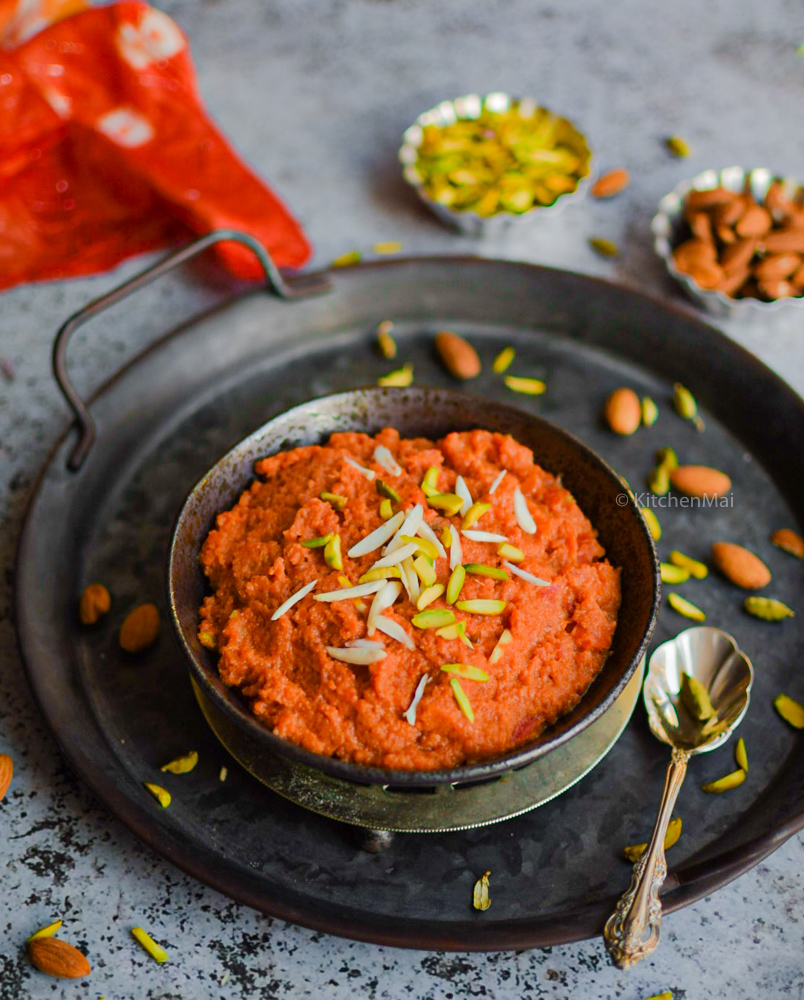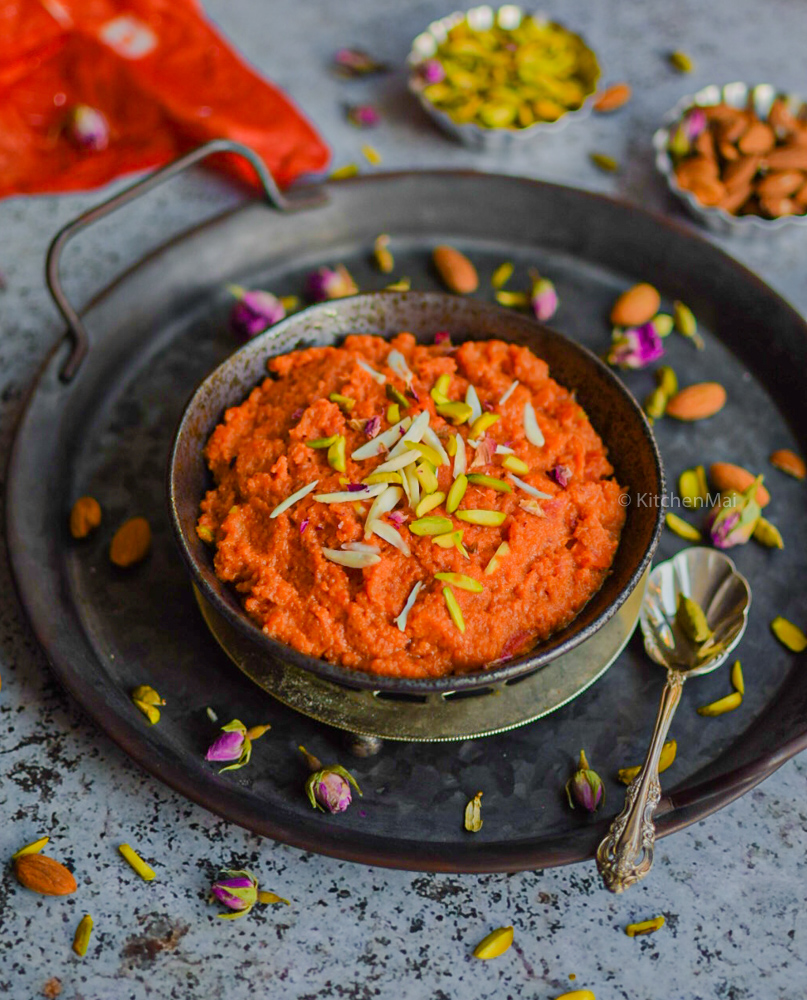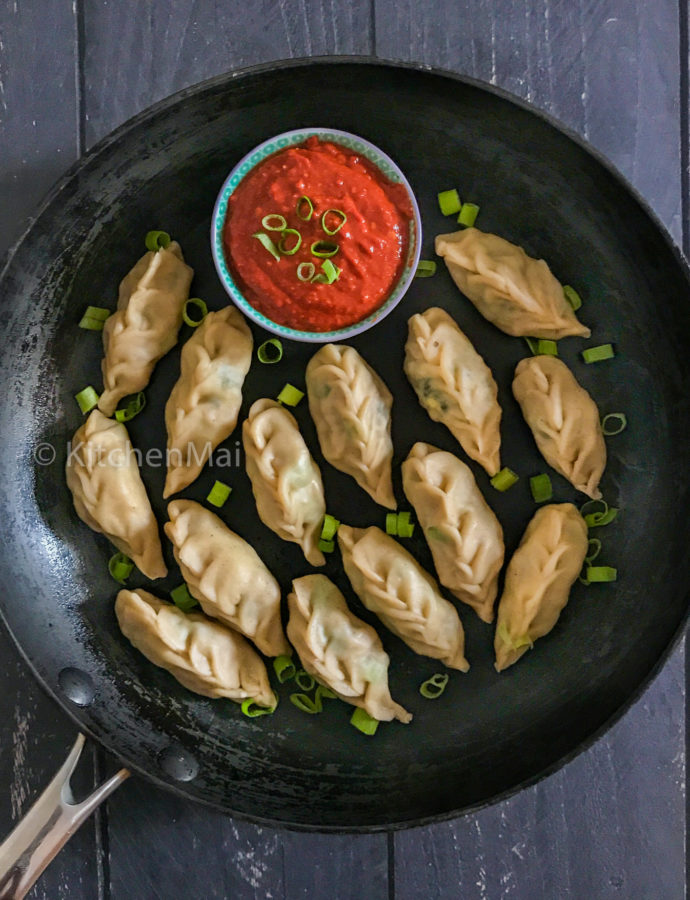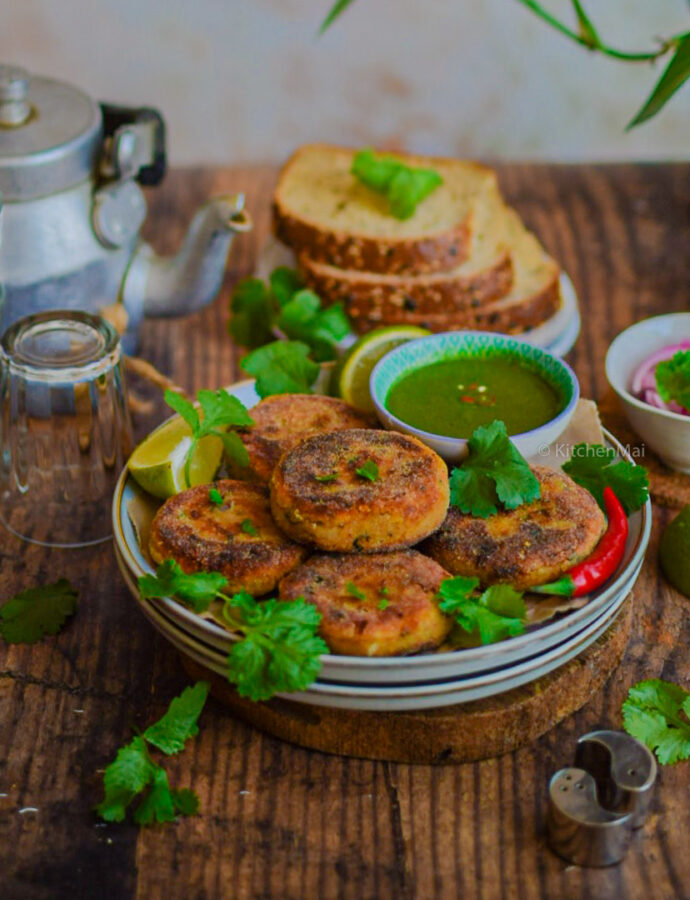A delicious and homestyle Indian dessert recipe that’s made with winter carrots and milk in ghee and garnished with pistachios and almonds
This is the first time that I’ve made gajar ka halwa. The reason is every winter we visit our families back in India and this time we aren’t. And with our visits we would be treated to delicious, homemade winter delicacies, that we will be missing this year. However, staying back here, this time of the year has given me the chance to finally make some of those, if not all, recipes. I made the halwa with seasonal red carrots I picked up at my Indian grocer, last week. Maa always makes it at home, back in Mumbai every winter, like most Indian homes. After all, gajar ka halwa is one of the best ways to relish the juicy, bright red, seasonal carrots. For a dessert that tastes so good, the recipe is pretty straight forward.
This recipe is the way maa makes at home and since it’s the one I love the most, I haven’t made any changes to it. Hers is a simple method wherein she cooks grated carrots with milk, adds in the sugar and finally garnishes it with nuts. While a lot of recipes also add khoya (milk solids) to make the halwa richer, this one is made without it. One of the reasons being, when cooking down whole milk (used here as well) for a long time, it reduces down to a thick, creamy consistency. Though not as rich as khoya, even this adds a wonderful texture and richness to the dessert. However, you could add grated khoya to your halwa right at the end of this recipe as well.
You may also like,
Pineapple sheera with jaggery (pineapple halwa)
Kheer komola (Bengali orange kheer)
Labor of love
Even though the gajar ka halwa is a one pot recipe and easy too, it will need some time and attention from you. A yummy and moist halwa is going to need some TLC while cooking. That’s because, the carrots and the milk are cooked together on a low to medium heat. This allows the milk to reduce to a creamy consistency and also gets the carrots cooking. Moreover, the low heat ensures that neither of them stick to your cooking pot and burn. While you don’t have to be continuously stirring it, but intermittently for sure. Therefore, for about a kilogram of grated carrots, you would need almost an hour of cooking. However, let me assure you that the end result is going to highly rewarding.
If you are in India, then I am sure you are surrounded with fresh winter produce (red carrots included) in your vegetable market. And if you are anywhere else and can lay your hands on these seasonal beauties, make sure to try this wonderful winter dessert recipe. You can enjoy your gajar ka halwa both warm and even chilled, it tastes yum either ways. At our house the husband likes it warm, I prefer my bowl of halwa chilled. I know some friends, who like adding a scoop of vanilla ice-cream over a bowl of piping hot gajar halwa. Let me know how you enjoyed it, when you make it. You can share your food pictures me too on Instagram and Pinterest. I’d love to hear from you.
Eat hearty!
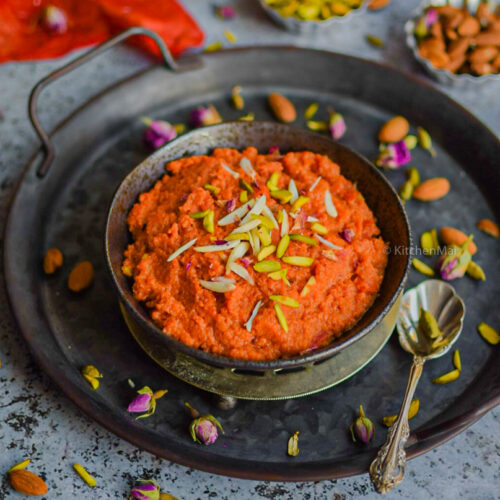

Gajar ka halwa (carrot halwa)
Equipment
- Shallow cooking pot
Ingredients
- 750 g red Indian carrots
- 750 ml whole/full fat milk
- ¾ cup sugar
- 3-4 tbsp ghee
- 2 tsp cardamom powder
- 3-4 tbsp raisins soaked in water
- 3-4 tbsp almonds slivered
- 3-4 tbsp pistachios sliced
Instructions
- Heat the ghee, over medium flame, until it melts and add the grated carrots. Mix well and cook for 3-4 minutes and then pour in the milk
- Mix evenly and simmer until the carrots are throughly cooked and the milk has almost dried up - should take about 40-45 minutes. Keep stirring intermittently, to prevent the milk or carrots sticking to the pot
- Add the sugar and mix well and cook until the halwa has soaked up all the liquid from the sugar. Switch the flame off add the cardamom powder, raisins and nuts and mix well
- You can serve this delicious gajar ka halwa both, warm and chilled, but do remember to garnish it with more nuts. Enjoy!

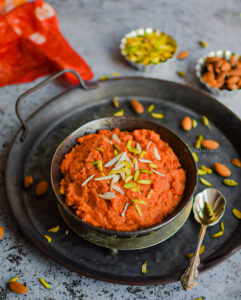
Notes
- Before grating the carrots, trim the crown and the bottom of each of them, also wash and peel them
- g - grams
- ml - millilitres
- 1 cup = 250 millilitres

